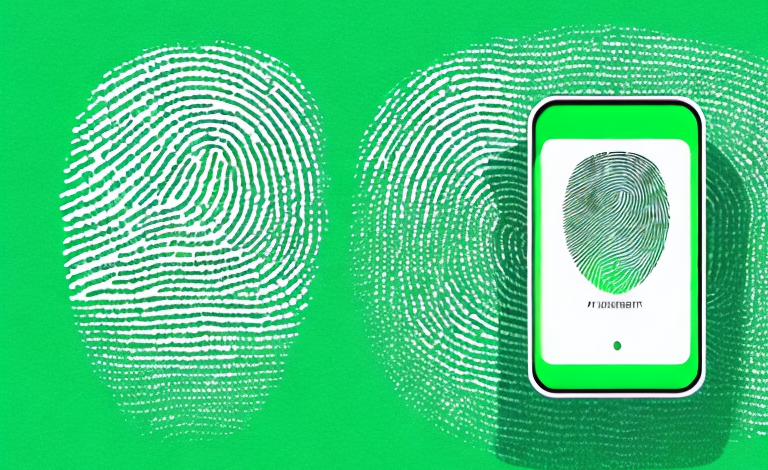Biometric authentication technology has become increasingly popular in recent years as it offers more secure ways of accessing sensitive data. Fingerprint and face recognition are two of the most commonly used forms of biometric authentication, but which one is more secure? In this article, we will explore the advantages, disadvantages, and science behind both fingerprint and face recognition technologies. We will compare their security features, discuss factors impacting accuracy, and consider ethical and legal concerns surrounding the use of biometric technology. By the end of this article, you will have a clear understanding of which biometric technology is safer and how to choose the right one for your personal or business use.
Advantages and disadvantages of fingerprint and face recognition technology.
Fingerprint recognition technology identifies individuals by analyzing small distinguishing features of their fingerprints, such as patterns and grooves. One of the main advantages of fingerprint technology is its reliability and ease of use, as fingerprints are unique to each person and difficult to forge. However, there are potential disadvantages. Fingerprint recognition may not be suitable for people with damaged fingerprints due to skin conditions, as this can result in false negatives. Additionally, fingerprint recognition data can be stored and potentially breached, which poses significant security risks.
Face recognition technology, on the other hand, uses facial recognition algorithms to identify individuals using various facial features such as distance between the eyes, nose, lips, and jawline. One advantage of face recognition technology is its ease of use, as the technology can usually capture facial images without active user cooperation. Plus, it is less invasive than fingerprint technology, as it doesn’t require users to present their fingers. However, face recognition technology can prove to be less accurate than fingerprint technology in certain scenarios. For example, variations in lighting, facial expressions, accessories, and environmental factors can affect the performance of the technology. There are also concerns regarding the potential abuse of facial recognition when used without consent, such as through spy cameras or social media platforms.
The science behind fingerprint and face recognition technology.
The uniqueness of fingerprints is determined by the formation of sweat pores, the ridges and furrows, and the overall pattern created on the fingertip. This information is used to create a mathematical representation of the fingerprint, which is then compared with the database of registered prints to identify users. In contrast, the technology behind facial recognition uses complex algorithms that create a mathematical representation of the user’s face by analyzing various facial features, including the distance between the eyes, the length of the nose, the shape of the mouth, and the general structure of the face. This data is then matched against the stored data to confirm the user’s identity.
Accuracy levels of fingerprint and face recognition.
Both fingerprint and face recognition technologies have improved in terms of accuracy in recent years. Fingerprint recognition is generally considered to be more accurate when compared with other biometric authentication technologies. Face recognition technology has made significant strides in accuracy, but there are still concerns regarding its reliability in less than optimal circumstances, such as dim lighting, multitasking situations or low-quality cameras.
Factors affecting the accuracy of fingerprint and face recognition.
There are several factors that affect the accuracy of fingerprint and face recognition technologies. For fingerprint recognition, the factors include finger placement, the condition of the finger, and the angle of placement. For face recognition, the factors include lighting, occlusions such as glasses/beards, and pose angle. Additionally, variations in the environment, image quality, device quality, and general imaging conditions can also impact accuracy levels.
Security risks associated with fingerprint and face recognition technology.
There are several security risks associated with fingerprint and face recognition technology. One of the main risks is the potential for unauthorized access to personal data. Biometric data can be stored in centralized databases, making it vulnerable to data breaches. Another risk is the possibility of false positives, which can result in individuals being mistakenly identified as someone else. Additionally, there is the risk of exploitation of biometric data by attackers who gain physical access to databases or use other forms of social engineering to manipulate the system.
Comparison between the security features of fingerprint and face recognition technologies.
Fingerprint and face recognition technologies have different security features, and the right choice for you will depend on your specific use case. Fingerprint recognition technology offers a higher level of security, as fingerprints are difficult to forge, and the technology is less susceptible to variations in the environment. Face recognition technology is less invasive and often easier to use but can be less accurate than fingerprint technology in certain scenarios. In general, both technologies offer great benefits as they are difficult to replicate and offer enhanced security compared with traditional password or locker code systems.
The future of biometric security- will it be dominated by fingerprint or face recognition?
The future of biometric security is likely to be shaped by technological innovation and changing market trends. We are likely to see an increasing use of biometric authentication in sensitive areas such as healthcare, banking, and government. In terms of fingerprint vs. face recognition, it is difficult to predict which technology will dominate in the future, as both offer their unique advantages and disadvantages. However, we are likely to see continued efforts to improve detection accuracy, enhance device usability, and develop secure biometric authentication methodologies to meet the ever-evolving security threats.
How to choose between fingerprint and face recognition technology for your business or personal use?
The decision between fingerprint and face recognition technology depends on your specific needs and circumstances. Key factors to consider include the required level of security, ease-of-use, and cost. Additionally, you need to consider the environmental factors at play and possible constraints such as security policies or data protection regulations. Seeking advice from security experts or consulting with different vendors is advisable to get the most suitable solution for your use case.
Legal considerations for using biometric security technology.
Using biometric security technologies is subject to legal considerations, and businesses must adhere to strict regulations regarding the collection and use of biometric data. Before deploying biometric security technology, it is important to understand the legal landscape, including privacy regulations and other relevant laws. Working with legal professionals and ensuring adequate and transparent legal contracts with vendors is vital to mitigate potential risks.
The impact of COVID-19 on the use of biometric security technology.
The COVID-19 pandemic has had a profound impact on the use of biometric security technology. With concerns about viral transmission, touchless technologies such as facial recognition and iris scanning have become more popular. Additionally, the market demand for facial recognition technologies has increased significantly in areas such as healthcare, contactless payments, and access control. However, there are concerns about the long-term security implications of a mass adoption of touchless technologies in terms of identity fraud and loss of privacy.
Alternative biometric authentication methods to consider alongside fingerprint and face recognition.
There are several alternative biometric authentication methods that businesses can consider alongside fingerprint and face recognition technologies. One increasingly popular solution is voice recognition, which uses voice patterns to authenticate individuals. Other options include iris scanning, hand geometry, and even brainwave sensing. Each technology has distinct advantages and disadvantages, and the choice of authentication technology should be based on the specific application and business requirements.
Case studies on successful implementation of fingerprint and face recognition technologies in various industries.
There are several successful implementations of fingerprint and face recognition technologies across various industries. For example, in the healthcare industry, biometric authentication is being used to reduce identity fraud and improve patient-data privacy. In the financial sector, biometric authentication is being used to secure accounts and prevent fraudulent activities. In government, biometric authentication is being used to secure border controls and prevent terrorism. By embracing biometric authentication, these industries have seen significant improvements in security, user experience, and cost savings.
Ethical concerns surrounding the use of biometric data for authentication purposes.
There are ethical concerns surrounding the use of biometric data for authentication purposes. For instance, the collection of biometric data without the explicit consent of the user can be considered a breach of privacy. Moreover, if biometric databases are breached, individuals are at risk of losing control over their biometric data, leading to identity theft and other fraudulent activities. Additionally, there are concerns regarding biases in the algorithms that could lead to discrimination against certain groups. It is vital to consider ethical implications when deploying biometric authentication technology and seek input from users and experts to mitigate potential risks and reduce unintended consequences.
Best practices for securing your biometric data when using fingerprint or face recognition technology.
When using fingerprint or face recognition technology, it is essential to follow best practices to secure personal data. One of the primary ways to secure biometric data is to encrypt it both during transmission and storage. Moreover, implementing appropriate access policies and authentication protocols can reduce the risk of unauthorized access to the data. Using trusted vendors and regularly updating devices and software can also enhance the security of biometric data.
Conclusion
In conclusion, both fingerprint and face recognition technologies offer their unique advantages and disadvantages when it comes to security. Fingerprint recognition technology provides a higher level of reliability and is more difficult to forge, while face recognition technology offers ease of use and is less invasive. Ultimately, the choice of technology should be based on the specific application, environment, and cost considerations. It is also vital to consider legal and ethical implications when deploying biometric authentication technology and adhering to best practices to secure personal data. By considering these factors, individuals and businesses can leverage biometric technology’s benefits while mitigating potential risks and ensuring safe and secure authentication.


